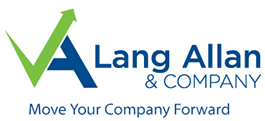Section 179 of the U.S. tax code offers a tax incentive to small and medium-sized businesses by allowing them to take a full deduction on tangible assets in the year items were purchased and put into service. The cost of such significant purchases would generally be depreciated over time, but the Section 179 deduction lowers the business taxable income in the purchase year.
Limits and Caps
This section of the tax code limits the total amount that can be written off and caps the total amount of equipment that can be purchased. After those limits are reached, the deduction phases out on a dollar-for-dollar basis. In 2024, the deduction is limited to $1,220,000. It begins to decrease if more than $3,050,000 worth of property is placed in service and entirely removed once $4,270,000 in purchases is reached. A business can combine multiple expenses to get the deduction total.
A business can employ the Section 179 deduction even though the purchase will remain valuable in future years.
What’s covered?
Many essentials that retain value over time are covered by Section 179:
- Office furniture, computers, off-the-shelf software, and similar business equipment may be new or new to you as long as it is not custom-made or modified specifically for your company’s equipment.
- Machinery and similar equipment.
- Livestock that is used for business purposes.
Vehicles may be covered by Section 179, but the rules are particular because early on, some business owners used the high limits to buy expensive trucks (thus the section’s nickname, the Hummer tax deduction). Vehicles must be used for business purposes over 50% of the time. SUVs have specific additional restrictions:
- They must weigh between 6,000 and 14,000 pounds.
- In 2024, they are subject to a deduction limit of $30,500.
Nontraditional vehicles, such as cargo vans or trucks with specific functional designs, may also qualify for Section 179 deductions, provided that they can seat more than nine people behind the driver’s seat and have a cargo compartment six or more feet long that isn’t accessible from the passenger seating area.
Section 179 doesn’t cover rent, real estate purchases, or land improvements (paved parking areas, fences, etc.). However, nonresidential property improvements may be eligible; these would include fire alarm systems, protection or security systems, and ventilation, heating, and air conditioning systems. Certain improvements to lodging facilities (such as hotels or apartments) may take advantage of Section 179.
Section 179 deductions are limited to a business’s annual taxable business income, meaning that a company cannot deduct more than its net income. However, unused amounts may be carried over to future years.
Questions?
Let’s discuss the possible Section 179 deductions you can claim this year. Give us a call to discuss the possibilities.
